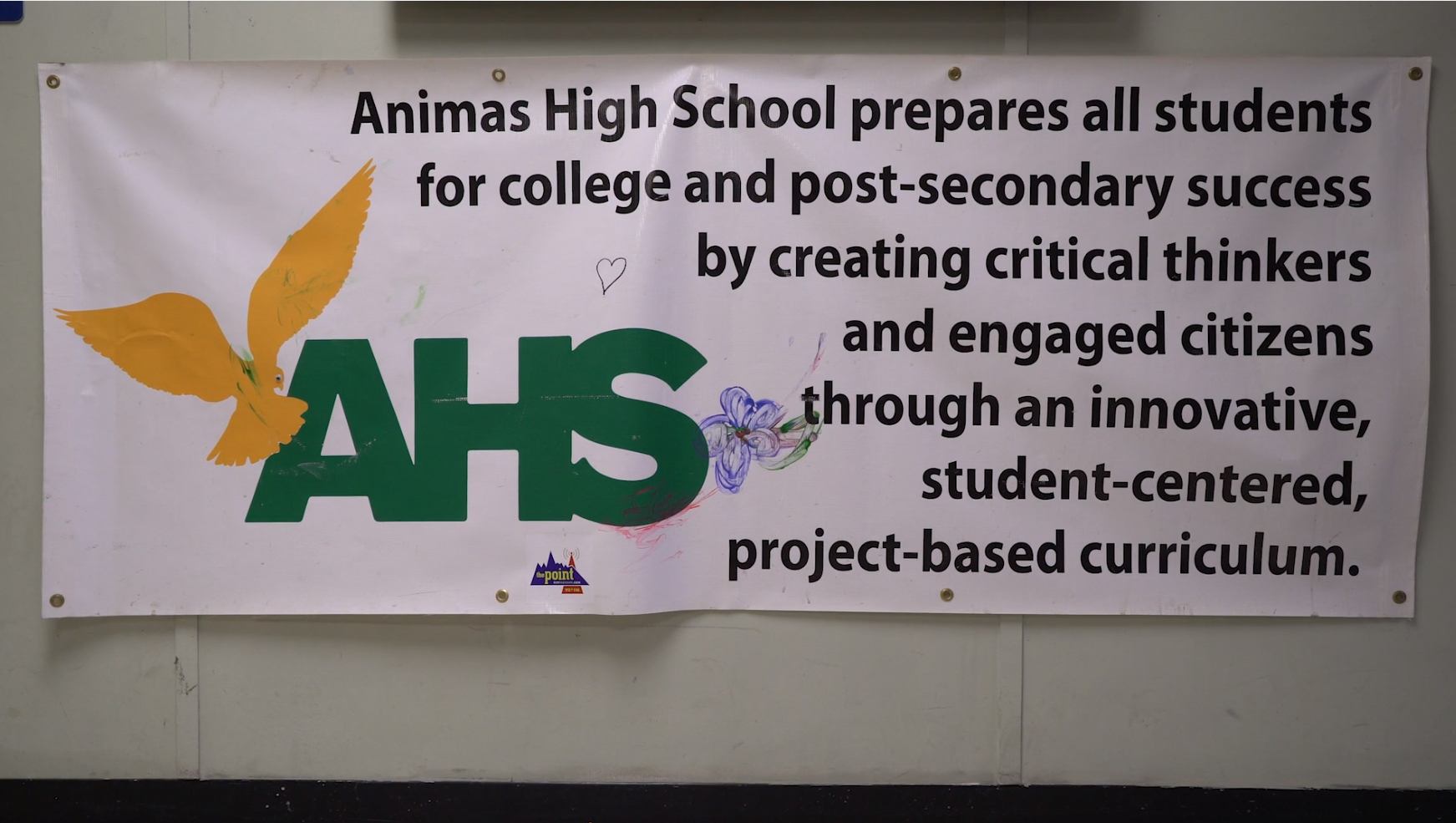“We’d been looking at UDL for a while and trying to determine how to best implement it for our entire school. It’s not necessarily an overhaul, but it’s definitely a different lens and frame of thinking, and involves some intentional strategy. The RISE grant has given us this opportunity.”
—Sean Woytek, Head of School
Embracing UDL for a Holistic Approach to Capturing Diverse Learners
Founded in 2009 by community members who saw a need for a distinctive school of choice in the Four Corners region, Animas High School (AHS) serves approximately 200 students in grades 9-12 in Durango. Utilizing the RISE grant, they have chosen to implement the Universal Design for Learning (UDL) strategy to hone in on diverse learners. Sean Woytek, Head of School, explains, “We’d been looking at UDL for a while and trying to determine how to best implement it for our entire school. It’s not necessarily an overhaul, but it’s definitely a different lens and frame of thinking, and involves some intentional strategy. The RISE grant has given us this opportunity.”
AHS used the tenth grade class as a pilot group for the new UDL program with a goal to expand to grades 9-12 in the 2022-23 school year. Sophomores are focusing specifically on the Expert Learner aspect of UDL, both developing the metacognition and applying that framework throughout the school year. The goal is that at all informal and formal check-ins throughout the year, including student-led conferences and presentations of learning, students are able to apply the expert learner framework to determine how they are doing in their classes.
According to Sean, AHS chose UDL because it allows them to design for the students who are on the fringe first, diverse learners who might traditionally be pulled out of the classroom into special groups, and then apply it to the general population so that ultimately everyone benefits. “Rather than specifically targeting diverse learners, UDL looks at how we serve them and through that, serve the entire population. The inclusion strategy lends itself to applying it to an entire grade level and not just diverse learners. It then becomes a tier 1 intervention that benefits everyone,” says Sean.
Animas implemented milestones to benchmark the program’s progress, starting with educating the students and parents so that everyone understood the purpose of the program as well as the tools that would be utilized. The goal is for students to appropriately articulate the strategies that tenth grade is using to become better expert learners. The first student-led conferences of the school year, in which students sat down with their parents and teachers, provided an opportunity for the pilot group to reflect on the three categories of expert learners while providing staff with a formal check-in on how well students grasped the program and are able to articulate it.
As the RISE program gets up to speed at Animas, Sean questions whether their data will provide an accurate representation of the new implementation, given the disruptions inherent with the pandemic as well as a move to a new building that’s coming soon. Regardless, he and the team at Animas are excited and energized for the opportunity. “It has been a beacon for our tenth grade team at times,” shares Sean.
For Animas, The RISE grant has provided resources, support and financial incentive to build and critically examine their classroom practices. With teachers who are committed to an inclusive, equitable school, implementing UDL has forced them to examine whether they are truly meeting that goal. “That’s a huge gain,” says Sean. “As a small standalone charter school, it's really tough to change practices, particularly since we're a high performing school. If we were a terrible school, it'd be pretty easy to say, ‘look at what our data says; we are not doing what we should be doing. We need to change. But when we're a high-performing school, it's really difficult to say we need to change it because that's not necessarily the truth.”
Unfortunately, one of their three tenth grade teachers needed to take an extended leave of absence, and as soon as she returned, a student passed away. Both incidents slowed Animas’ implementation process, though they’ve been able to keep a focus on UDL even if not to the extent for which they hoped.
One piece that both Sean and his team found most helpful was the observation tool, particularly the ease and quick access to feedback that it provided both administration and teachers. “Universal design has been something that we've been trying to get at as a school, and I think this additional push has helped the tenth grade team realize, all right, we didn't do it perfectly this year, so let's hopefully be able to do it better next year with things hopefully a little bit better in terms of being normal,” he says.

School Toolkit
- Norms of Collaboration
- Planning Backwards: Your Project Handout
- Hess’ Cognitive Rigor Matrix & Curricular Examples (Math/Science)
- Hess’ Cognitive Rigor Matrix & Curricular Examples (Reading/Writing)
- ESS Protocol
- Project Tuning
- Student Profile Template
- Student Profile Template (Sample Filled Out)
- Three Protocols We Love

